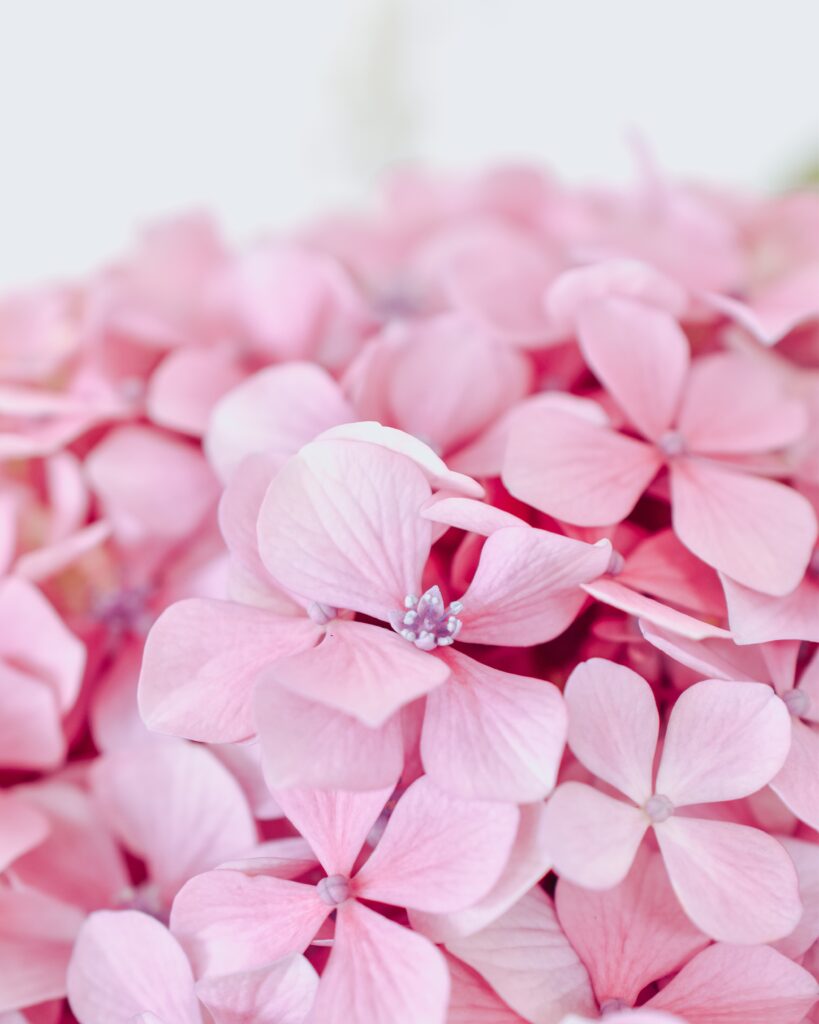July 10th, 2023Glen, about the house

Dwarf hydrangeas
Our 2008 move across town, from The Coach House to our present house, gave us the opportunity to
restore a tired and drought-ridden, multi-level hillside property.
The clusters of elderly eucalypts, rhododendrons, camellias and photinias, and random stone walled
terracing, told us it had once been a beautiful garden. It also gave us the drive to bring it back again – and take it a few steps further in planting many other shrubs that would have been popular back when.
Unfortunately, we have never been able to find a suitable spot or space for the one shrub Peta desires, a hydrangea. And that is although hydrangea, or to call them by their botanical name – hortensia – are among the easiest of the flowering plants.
But they grow into enormous shrubs, almost small trees, and in their early years need shelter from direct sun away from hot winds and almost constantly-moist soil.
Their young growths and leaves are soft and sappy. If in their early years they are subjected to hot, drying winds and/or summer sunlight, they will collapse and wilt no matter how many times they’re watered.
It isn’t as though our garden beds are lacking in shady spots. It’s just that they’re either open to the north winds, or just not large enough to accommodate a huge shrub, and we are located on a clay-bound ridge of non-porous soil commonly known, I believe, as Lizard Country. Thus leading to working over it with lots of mulch and composted loam.
But we do have several narrow east-facing beds along the front wall suitable for small shrubs. And just by chance when visiting the Ballarat Botanical Gardens with friends, we spotted a display of plants for sale at the entrance of the Begonia House.
They were from the adjacent nursery and included a range of several varieties of dwarf hydrangeas.
Needless to say, a subsequent trip to the gardens, and of course the nursery, resulted in a sizeable collection of dwarf hydrangeas now gracing our garden, one of which, named pistachio, has already flowered. (Pictured.)
There are now dwarf versions available of most hydrangea varieties, mostly with similarly large flower clusters as their bigger cousins. The only difference is the smaller foliage and a maximum height of about one metre. Also, like the large varieties, the flowers can be either blue or pink, depending on the acidity of the soil.
Fans of the oakleaf hydrangea, H.quercifolia, will be pleased to hear that there is also a dwarf version entitled Pee Wee, which also grows to a mere metre in height with all of the characteristics of the standard sized variety.
Ballarat Botanical Gardens Nursery
Just like at our own Wombat Hill Botanic Gardens, a dedicated band of volunteer Garden Friends cherish and maintain the Ballarat Botanical Gardens, raising funds by propagating and selling the progeny of the many, often rarely-seen plants, growing around them. The nursery is open 1-4pm on Tuesdays and every second Sunday.
I was delighted to find on a previous trip an unknown (at least, to me) white flowering variety of the orange flowering plant, leonotis leonurus, or Lion’s Tail. I have always had a rather sentimental attachment to this plant. As a child of about seven, helping my grandfather with the cuttings, I learned and memorised my first ever botanical plant name.
I’ve never forgotten that name because it was the key to my life-long interest, not only of plant life but the derivation of the words we use to identify them. I’ve had a leonurus in every garden since – and now there are two.
Got a gardening query? Email glenzgarden@gmail.com










